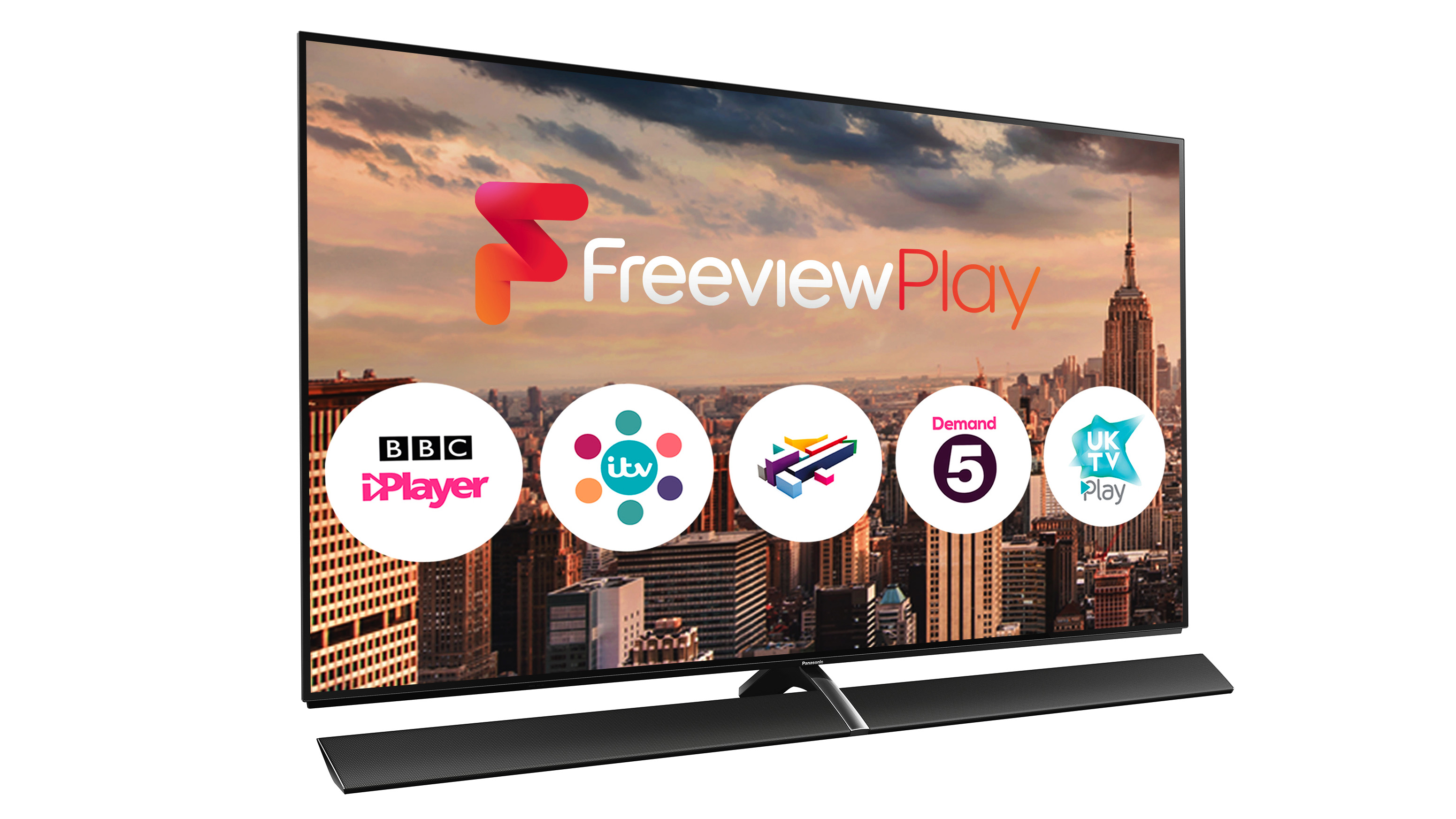TechRadar Verdict
Panasonic’s TV obsession for the past few years has been accuracy - a desire to let film and TV fans experience at home pictures that look exactly as their creators intended them to look. The 65EZ1002 is easily the brand’s most extreme and successful attempt at delivering on this obsession. So much so that uniquely it can actually be used as a professional studio mastering monitor as well as a TV.
Pros
- +
Stunning contrast performance
- +
Unprecedented colour accuracy
- +
Excellent sharpness
- +
Straightforward smart TV system
Cons
- -
It’s expensive
- -
No Dolby Vision support
- -
Some occasional vertical banding
- -
Occasional black level loss
Why you can trust TechRadar
As TVs become ever more obsessed with being thin, it’s becoming ever harder to stand out from the crowd. The 65EZ1002 manages to do it, though, by combining its OLED screen with a unique-looking external soundbar.
Dubbed the Dynamic Blade, this strikingly angular speaker system attaches to the bottom of the 65EZ1002’s stand ‘neck’ to form part of the TV’s support when you’re sitting it on a piece of furniture. Alternatively, it angles stylishly out from just below the screen if you’ve got the TV wall mounted.
Design
Screen sizes available: 65 inches
Tuner: Freeview HD
4K: Yes
HDR: Yes
Panel technology: OLED
Smart TV: Yes, Home Screen 2.0 and Freeview Play
Curved: No
Dimensions: 1452(w) x 837(h) x 42(d) mm
3D: No
Inputs: Four HDMIs, three USB, SD card, Ethernet, Wi-Fi, Bluetooth, headphone jack, optical audio output
As usual with OLED TVs, 65EZ1002’s screen is super-skinny around its edges and over around a third of its rear. The other two thirds of the rear, though, stick out a similar amount to many of the latest LCD TVs - presumably to accommodate the 65EZ1002’s prodigious amount of connections and processing power.
The 65EZ1002 is beautifully built, boasting plenty of heavy duty metal to front and rear, and sitting remarkably rigidly on that innovative soundbar/stand.
Connections cover all the bases you’d expect of a flagship TV, including highlights of four HDMIs, three USBs, an SD card slot (something we think far more TVs should carry) and Wi-Fi and Ethernet network options.
Remarkably the 65EZ1002’s SD card and USB ports can be used by professional mastering studios to upload their own colour look up tables to the TV, making it the first TV that can genuinely do double duty as a mastering (rather than simple reference) monitor. In other words, you could potentially watch a film at home on the very same screen used to master it. How’s that for accuracy?!
The only limitation of the 65EZ1002’s connections is that just two of the four HDMIs are full bandwidth affairs capable of delivering full HDR, 4K, 60Hz signals.
Sign up for breaking news, reviews, opinion, top tech deals, and more.
Design TL;DR: The 65EZ1002 isn’t the most flat-out gorgeous TV around, but its build quality is outstanding. Also, while that external ‘blade’ of a speaker system is potentially a bit Marmite, it’s nothing if not distinctive.
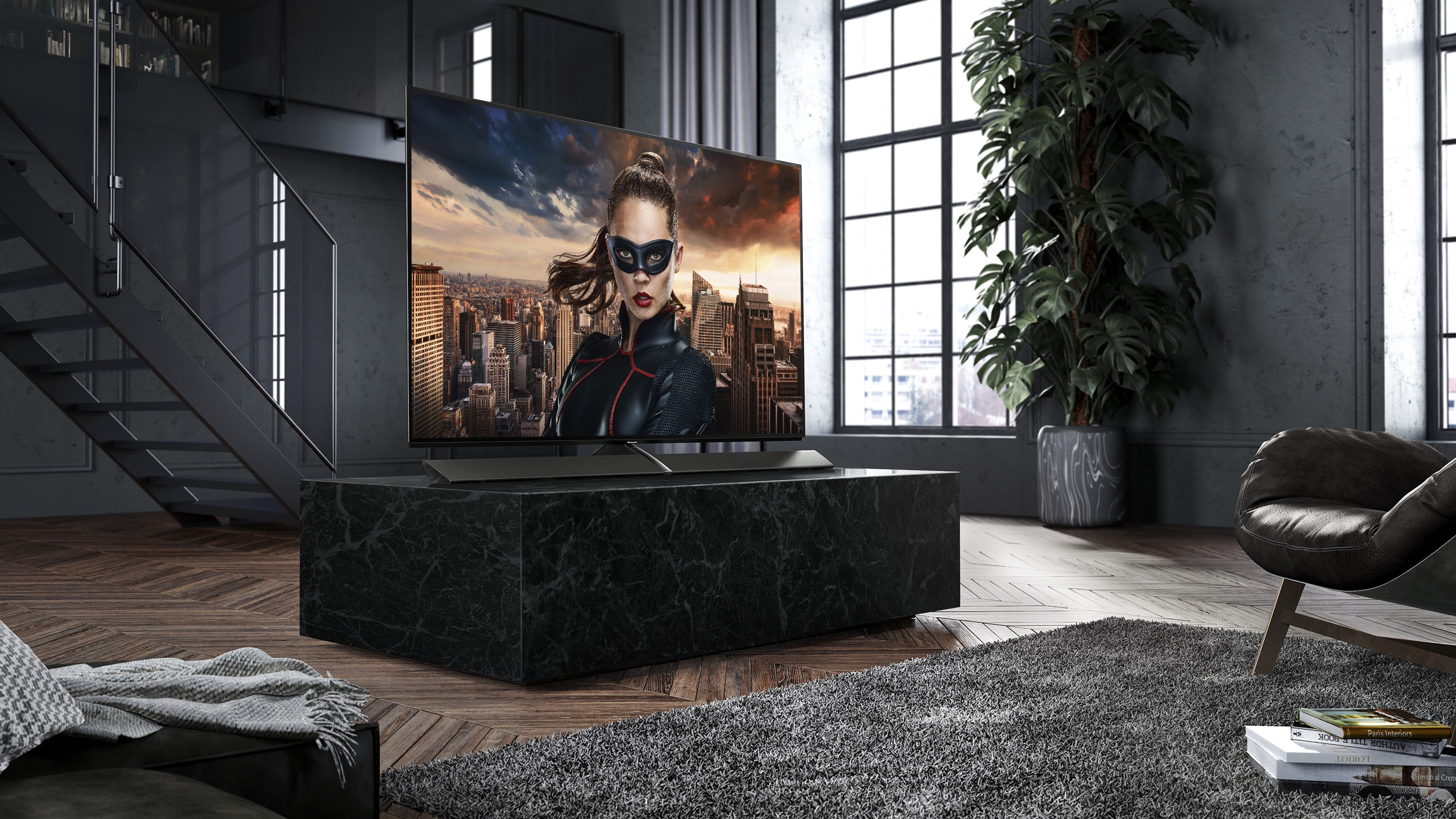
Smart TV (Home Screen 2.0, Freeview Play)
The 65EZ1002’s smart TV system is pretty to look at, easy to use, and effortless to customise - everything, in other words, that a smart TV interface ought to be.
It’s not the most content rich system in town, perhaps, but I don’t actually think that’s a bad thing. Most of the key TV-centric apps are there (Netflix in 4K HDR, Amazon in 4K HDR, the catch up TV services for the main terrestrial broadcasters via an integrated Freeview Play app), and it’s actually kind of nice not to wade through mountains of dross just to find all the good stuff.
It’s worth adding that since the 65EZ1002 uses Freeview Play to provide its broadcaster catch-up TV services, you can search for shows you’ve missed via an intuitive electronic programme guide that scrolls back seven days as well as forwards.
Smart TV TL;DR: Spend a few minutes putting your favourite apps on the home screen, and the 65EZ1002 gives you one of the most straightforward smart TV experiences around.
HD/SDR performance
The 65EZ1002 is nothing short of masterful with the HD and standard dynamic range pictures most of us will still find ourselves watching for much of the time.
For starters, the new Studio HCX2 processing system Panasonic has devised for its top-end 2017 TVs does the brand’s best job yet of upscaling HD sources to the TV’s native UHD resolution. As well as the image looking more textured and dense, it actually seems to lose rather than gain noise in the upscaling process thanks to the intelligence with which Panasonic’s processors are able to distinguish between ‘good’ and ‘bad’ HD picture content.
There seems to be more intelligence, too, in the way different parts of the image are upscaled, helping to create a better sense of depth than you usually see with native or upscaled HD images.
The 65EZ1002’s upscaling also appears to draw on Panasonic’s improved, near pro-grade 3D Look Up Table colour technology to deliver remarkably refined, natural looking colour blends and tonal shifts considering how many extra pixels of image data Panasonic is having to conjure up in the HD-to-4K journey. Only Sony’s X1 Extreme processing engine can get close to the sort of upscaled colour refinement the 65EZ1002 provides.

It’s not just the range of colours the 65EZ1002 can tap into that makes its upscaled images so outstanding either. The pixel-precise light control you get with OLED technology is also beautifully managed by Panasonic’s HCX2 system, further enhancing the sense of extra detail and colour nuance its upscaled images contain.
The 65EZ1002’s colour and light control strengths add up to a standard dynamic range picture that to my eyes is pretty much definitive. In other words, SDR looks as good as it’s probably ever going to get now that the TV world’s focus is shifting inexorably - and appropriately - towards high dynamic range playback.
The level of insight in terms of detail, colour and the 65EZ1002 gives into every frame of every Blu-ray I tried it with - even the relatively crappy looking ones - was just astonishing, giving you a new-found respect for the video format that’s dominated the AV world for so long.
Rounding out the 65EZ1002’s stellar HD/SDR performance are contrast and black level performances that are essentially perfect. Blacks look black rather than some shade of grey, and the deepest black colour sits right alongside the brightest white without any light pollution between the two. There’s no hint of the sort of backlight clouding you get with LCD TVs either, and also unlike LCD TVs there’s no reduction in contrast if you’re forced to watch the TV from an angle.
HD/SDR Performance TL;DR: Practically perfect in every way.
4K/HDR Performance
For the most part, the love affair kicked off by the 65EZ1002’s SDR performance merely grows deeper with its HDR efforts.
The first thing we noticed was how much brighter the 65EZ1002 gets with HDR compared with Panasonic’s debut OLED TV, 2015’s CZ952. This extra brightness (we measured 600 nits of light output using a 10% white HDR window) transforms the HDR experience, making bright scenes - especially exteriors - look far more natural and life-like, while dark scenes look much more contrast-rich and dynamic.
The ability of the 65EZ1002 to deliver a greater breadth of HDR’s light range also helps it produce a much more balanced picture with 4K Blu-rays and HDR streams than the (brilliant in its day) CZ952. What this means is that dark parts of mixed-brightness images no longer look so dark that they appear over-dominant and devoid of detail. On the contrary, such dark areas now give us the best evidence of how brilliantly Panasonic’s latest OLED TV usually handles light at the just above black stage that’s traditionally being an area of difficulty for OLED technology.
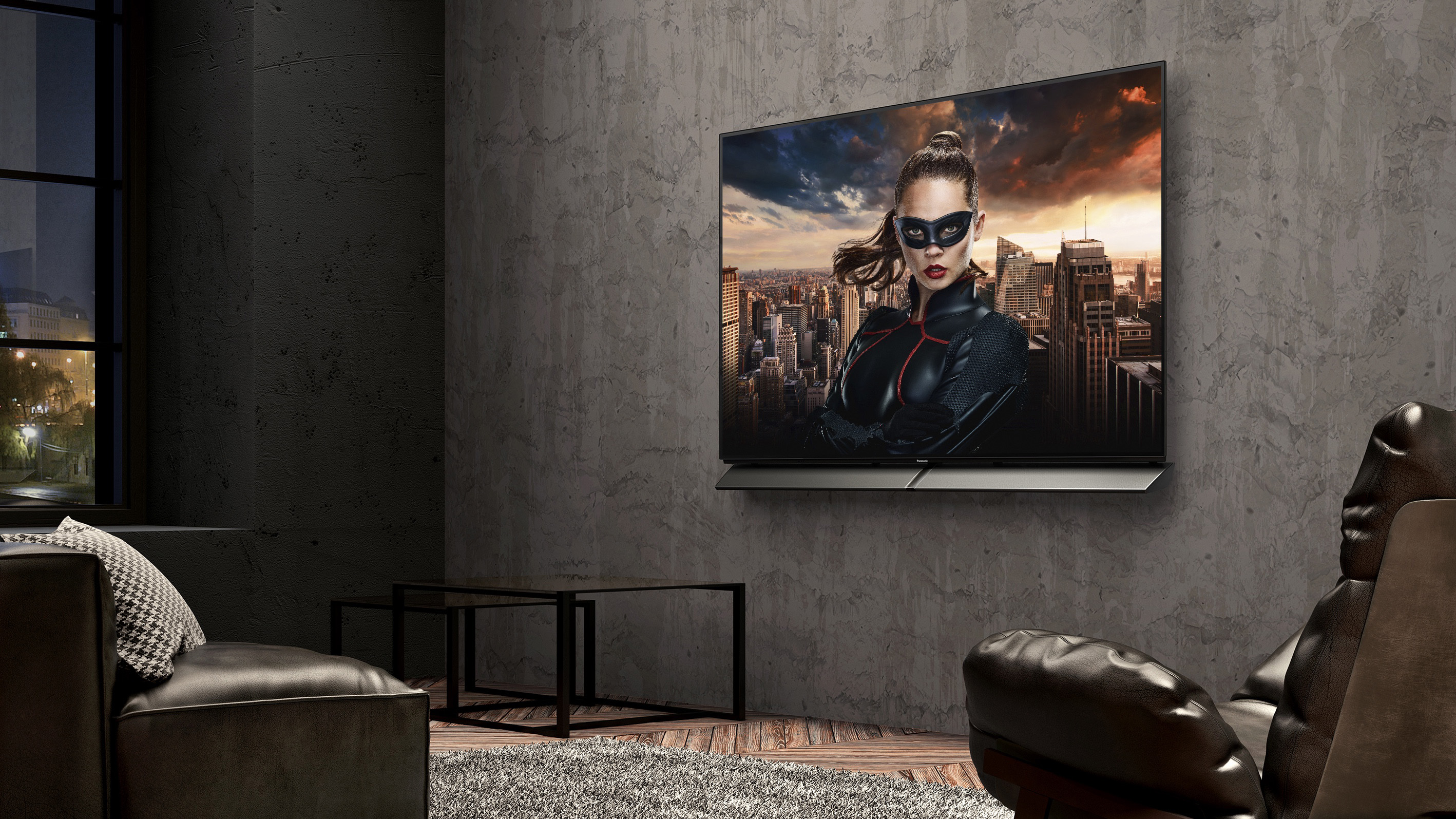
Being able to hit significantly brighter light peaks joins with Panasonic’s improved processing engine to help the 65EZ1002 render more detail in the brightest parts of HDR pictures than its predecessor. This again makes the HDR viewing experience feel much more satisfying and consistent.
If colours were great with SDR, they’re a revelation with HDR. Thanks to its use of the same sort of 3D Look-up Table technology used by content creators, the 65EZ1002 delivers hands down the most accurate colours of any TV so far. No other TV delivers colours that so closely resemble the way they likely looked when a video left the mastering suite. In other words, yes, Panasonic is truly living up to its ambition of getting as close as possible to showing you what the director intended you to see.
The exquisite management of colour and light delivered by the 65EZ1002 feeds into another outstanding attribute of its pictures: their sharpness and detail. You can both see and feel the extra definition available when watching native 4K sources, despite the quality of Panasonic’s HD upscaling engine. There’s more texture, more sharpness, more clarity, more colour insight and more depth to 4K images, underlining the importance of light and colour control to a truly spectacular Ultra HD image.
The 65EZ1002’s clarity during action scenes holds up better than on the CZ952, too, thanks to the HCX2 chip delivering improved motion processing. In fact, the improvement here is so great that I’d rate the 65EZ1002 as second only in motion handling terms to Sony’s high-end TVs.
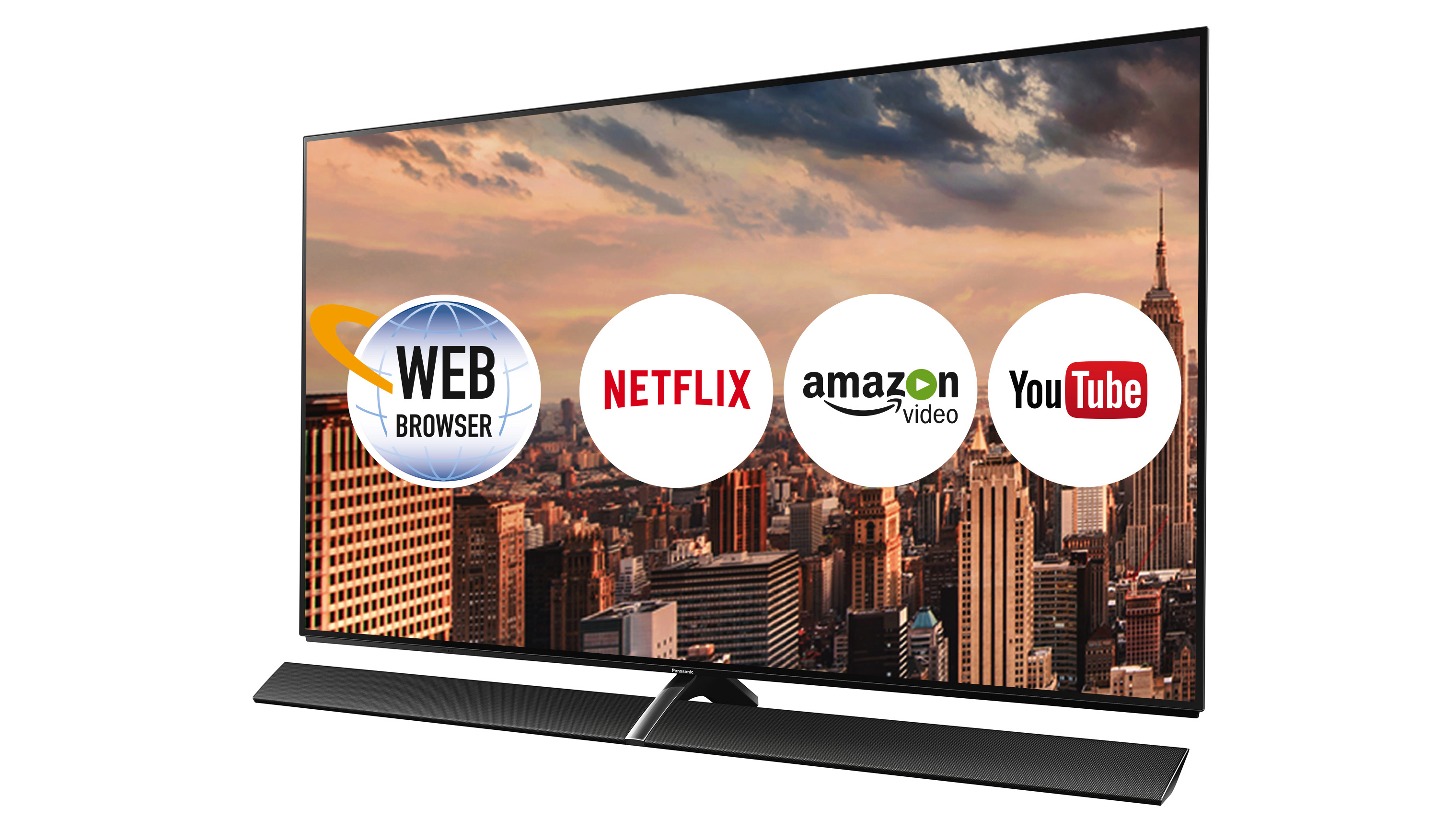
But don't just take our word for it. The TV has also passed the stringent testing procedures of the independent THX quality assurance group, and has had its colour performance tuned by Hollywood itself in the shape of Stefan Sonnenfeld, the colourist responsible for such A-list movies as Star Wars: The Force Awakens, and Man Of Steel.
While the 65EZ1002’s pictures look emphatically, world-beatingly good for the vast majority of the time, though, they’re not quite flawless.
The biggest issue with our review sample was the appearance of vertical banding across the picture with some dark shots. This is fairly subtle, and only crops up from time to time. But we spotted it on occasion during the majority of films we watched on it, and it was just obvious enough to not need ‘golden eyes’ to see it.
The same sorts of image content also sometimes reveal a strange lightening effect at the image’s left and right sides, and from time to time predominantly dark HDR shots that contain some very bright elements occasionally cause a sudden drop off in the screen’s typically stellar black level response.
Finally, while much brighter than Panasonic’s previous OLED TV, the 65EZ1002 is not nearly as bright as the latest flagship LCD TVs, and doesn’t deliver quite as much baseline brightness as LG’s latest OLED TVs. Many AV fans will happily sacrifice that LCD brightness for the intense contrast you get from OLED’s ability to put its brightest and darkest pixels side by side with no light crossover, though, and Panasonic’s set trumps LG’s OLED sets in other performance respects.
4K/HDR TL;DR: Aside from some peculiar sporadic vertical light banding, the 65EZ1002 gets closer than any other TV we’ve yet seen to giving you a professional-grade display in your living room.
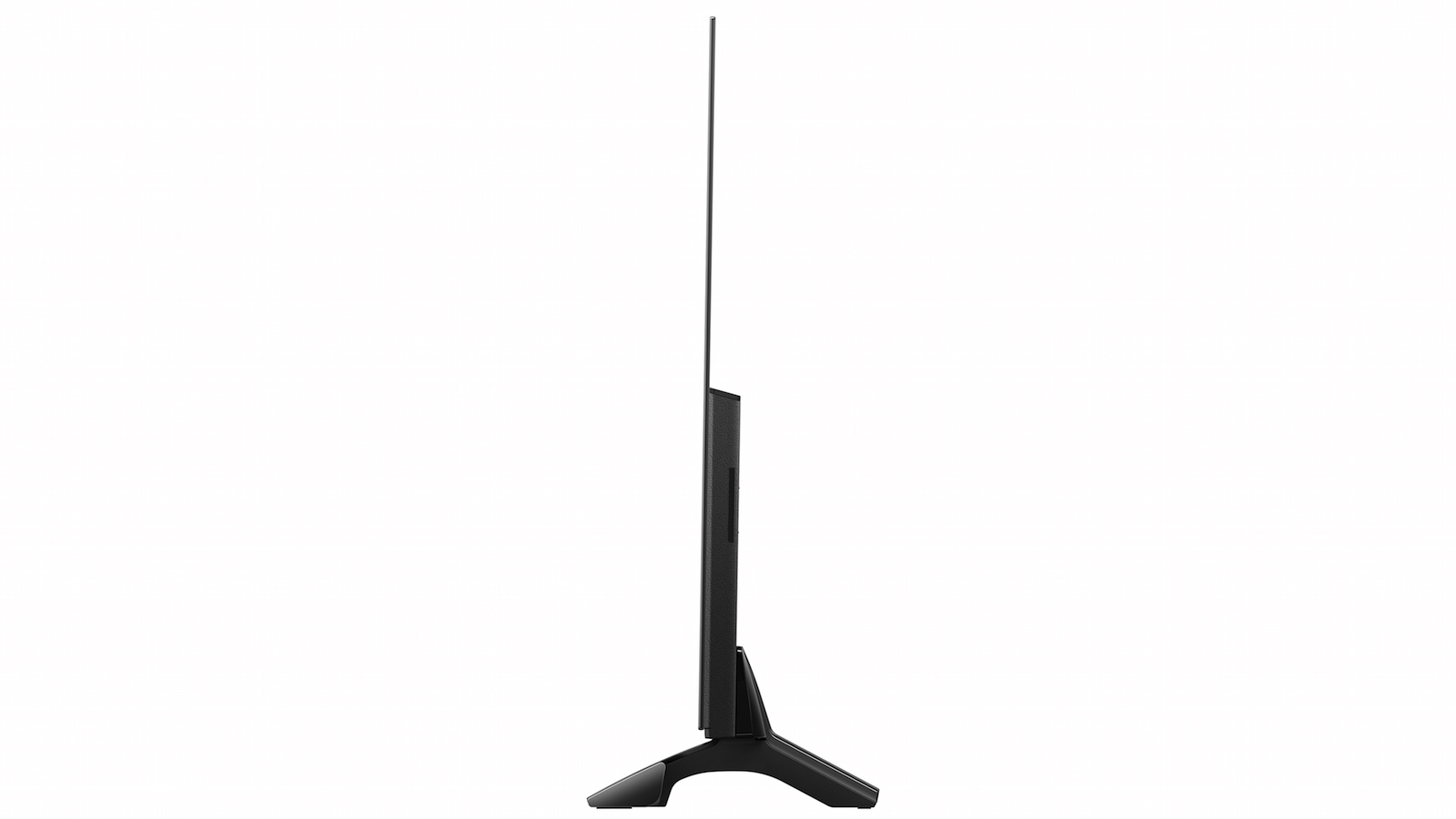
Sound performance
The Dynamic Blade soundbar you get with the 65EZ1002 is a serious bit of audio kit. Squeezed inside its uniquely angular form are eight woofers, four mid-range drivers, two tweeters, and a quad-passive radiator for enhancing bass.
Despite all this, though, and the contributory influence of high-end AV brand Technics, the 65EZ1002’s audio performance is only good rather than great.
On the upside, there’s plenty of ‘hi-fi’ detail in the soundstage, a decent amount of power, and precious little interference from cabinet rattles or speaker ‘phutting’. However, action scenes can sound a bit harsh, and the soundstage feels narrow compared with the very best integrated audio systems we’re seeing these days. Also, despite the angled-up ‘blade’ design voices sometimes appear rather dislocated from the onscreen action.
Sound TL;DR: The 65EZ1002 sounds better than most TVs, yet doesn’t quite hit the same heights you might expect with a good third-party soundbar.
Other panels to consider
If you’ve got enough disposable cash to be considering a 65EZ1002, you might also want to think about LG’s OLED65W7 TV. This OLED model is so incredibly thin that it barely sticks out more than wallpaper when you’ve got it hanging on your wall. It ships with an external single bar Dolby Atmos sound system too. It is even more expensive than the 65EZ1002 at £8,000 though, and not quite as strong a picture performer.
Another alternative would be Sony’s debut big-screen OLED TV, the KD-65A1. This beautifully designed set cunningly integrates a surprisingly effective ‘acoustic surface’ stereo sound system into its screen, and combines OLED’s natural advantages with Sony’s latest ‘X1 Extreme’ processing prowess to deliver beautifully detailed, colour- and contrast-rich pictures. Those pictures aren’t quite as bright or accurate as those of the 65EZ1002, though.
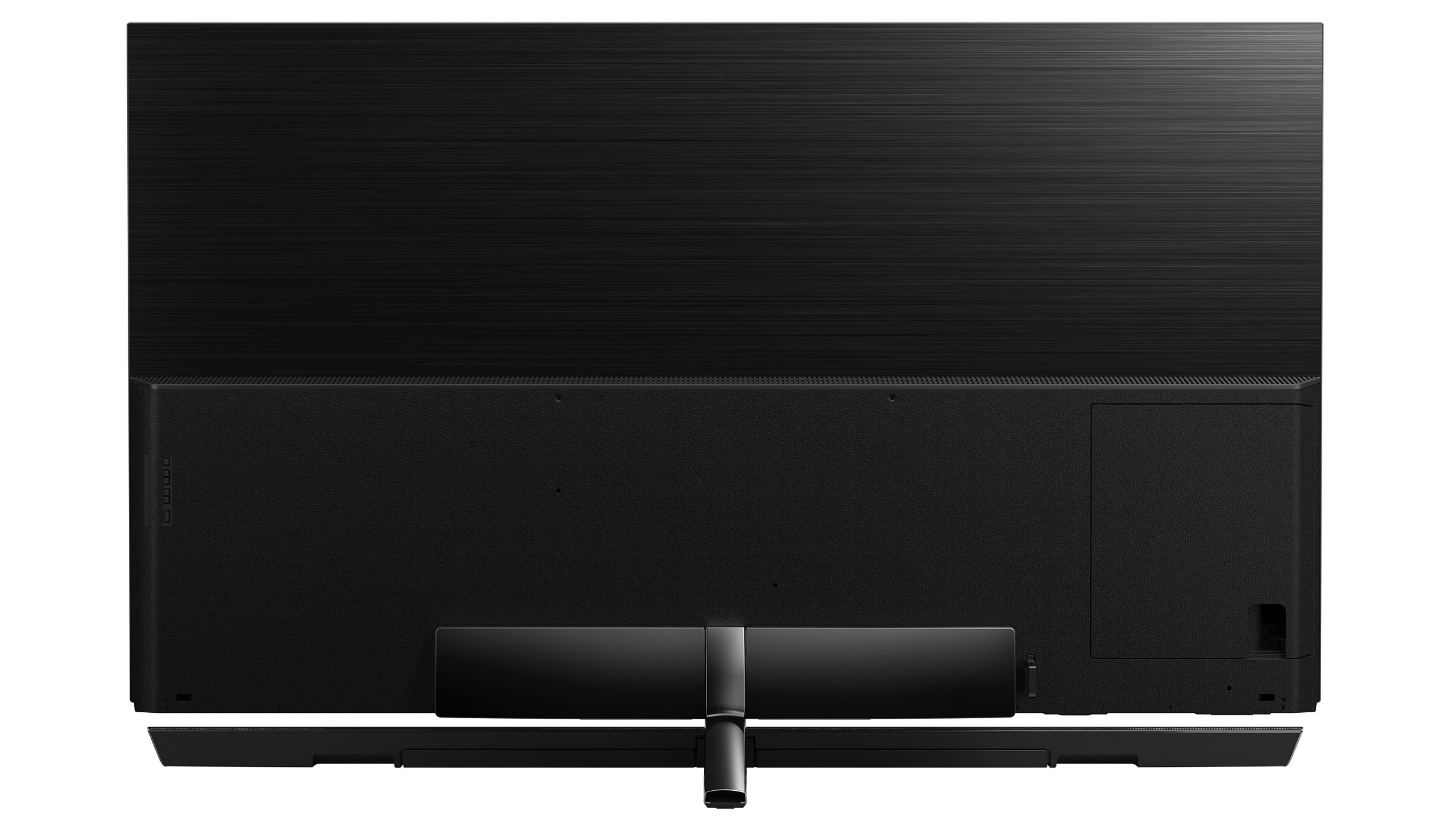
Verdict
With a price tag of pretty much £6,000, the 65EZ1002 needs to be special. Fortunately, it is.
By implementing a number of features usually reserved for the professional mastering monitor world, it’s able to deliver the most consistently beautiful and accurate pictures seen to date, with both HDR and SDR sources. It also offers a highly effective smart system, and a strong audio performance from its built-in soundbar.
LG’s latest OLEDs can deliver HDR with a touch more brightness and aggression than the 65EZ1002, and it’s a shame dark scenes are occasionally marred by some strange vertical brightness banding. For AV enthusiasts keen to reproduce their favourite directors’ vision at home, however, the 65EZ1002 is simply as good as it gets.
- Check out our guide to the best 4K TVs for our other top picks

John has been writing about home entertainment technology for more than two decades - an especially impressive feat considering he still claims to only be 35 years old (yeah, right). In that time he’s reviewed hundreds if not thousands of TVs, projectors and speakers, and spent frankly far too long sitting by himself in a dark room.
